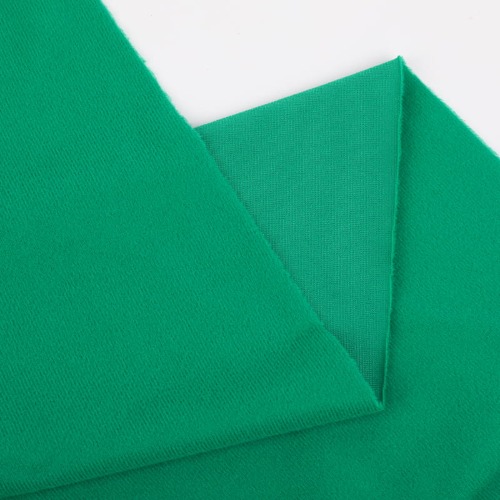When choosing a warp knitted fabric, several factors should be considered to ensure that the fabric meets your specific needs and requirements. Here are some key factors to consider when selecting a warp knitted fabric:
Fiber Content: Consider the fiber composition of the fabric. Common fibers used in warp knitted fabrics include cotton, polyester, nylon, spandex, and blends of these fibers. Each fiber has its own properties and characteristics, such as breathability, durability, stretch, and texture. Choose a fiber content that aligns with the desired performance and comfort of the fabric.
Fabric Weight: The weight of the fabric refers to its density or thickness. It can vary from lightweight and sheer fabrics to heavy and opaque ones. The choice of fabric weight depends on the intended use of the fabric. For example, lightweight fabrics are suitable for apparel and drapery, while heavier fabrics may be used for upholstery or outdoor applications.
Stretch and Recovery: Consider whether stretch is a desired characteristic for your application. Some warp knitted fabrics, especially those with the inclusion of spandex or elastane, offer stretch and excellent recovery properties. This can be advantageous for garments that require flexibility and ease of movement.
Breathability: Evaluate the breathability of the fabric. Breathability is important, particularly for clothing and active wear, as it affects comfort and moisture management. Fabrics with good breathability allow air circulation and promote the wicking of moisture away from the skin.
Durability: Assess the durability and strength of the fabric. Look for warp knitted fabrics that are known for their robustness and resistance to abrasion and tearing. Consider the intended use and choose a fabric that can withstand the demands of the application, whether it be for apparel, home textiles, or industrial purposes.
Color and Design: Consider the color options and design possibilities offered by the fabric. Warp knitted fabrics can be dyed in various colors and patterns. Depending on your specific requirements, select a fabric that offers the desired aesthetic appeal and design possibilities.
Care Instructions: Review the care instructions for the fabric. Some warp knitted fabrics may require special care, such as hand washing or dry cleaning, while others may be suitable for machine washing. Ensure that the fabric's care requirements align with your preferences and practicality.
Supplier and Quality: Lastly, consider the reputation and reliability of the fabric supplier. Choose a reputable supplier known for producing high-quality warp knitted fabrics. Request fabric samples or swatches to assess the quality and suitability of the fabric before making a final decision.
By considering these factors, you can select a warp knitted fabric that meets your specific needs in terms of fiber content, weight, stretch, breathability, durability, design, care requirements, and overall quality.Besides,The production of warp knitted fabric involves several steps. Here is a general overview of the production process:
Yarn Preparation: The first step is to prepare the yarns that will be used in the warp knitting process. Yarns are selected based on the desired fiber composition and properties of the final fabric. The yarns may undergo processes such as spinning, twisting, or dyeing to achieve the desired characteristics.
Warp Beam Preparation: The prepared yarns are wound onto warp beams. Warp beams are large cylindrical devices that hold multiple yarns in parallel. The yarns are wound under tension onto the warp beams, ensuring uniform distribution and alignment of the yarns.
Warp Knitting Machine Setup: The warp knitting machine is set up with the appropriate warp beam(s) and necessary components for the desired fabric structure. The machine is configured based on factors such as stitch pattern, gauge (number of needles per inch), and desired fabric width.
Warp Knitting: The warp knitting process begins as the warp beam(s) are mounted onto the machine. The yarns from the warp beams are fed through the machine and threaded into individual needles or guides. The warp knitting machine operates by interlacing the yarns in a specific pattern, creating loops and stitches. The movement of the needles or guides determines the structure and appearance of the fabric.
Finishing Processes: After the fabric is knitted, it goes through various finishing processes to enhance its properties and appearance. These processes may include washing, dyeing, printing, or applying coatings or finishes. Finishing processes can improve the fabric's color, texture, durability, and functionality, as well as remove any impurities or sizing agents used during knitting.
Inspection and Quality Control: Once the finishing processes are complete, the fabric undergoes inspection and quality control measures. It is checked for any defects, such as dropped stitches or irregularities, and for adherence to specifications. Quality control ensures that the fabric meets the desired standards in terms of appearance, performance, and dimensional stability.
Fabric Winding: The finished warp knitted fabric is then wound onto rolls or folded into appropriate lengths for packaging and transportation. The fabric is carefully rolled or folded to prevent creasing, damage, or distortion.
The specific details and variations in the production steps can differ depending on the type of warp knitting machine, fabric structure, and the specific requirements of the fabric being produced. Manufacturers may also incorporate additional steps or processes based on their production capabilities and the desired characteristics of the fabric.




 English
English 中文简体
中文简体


.jpg?imageView2/2/format/jp2)











